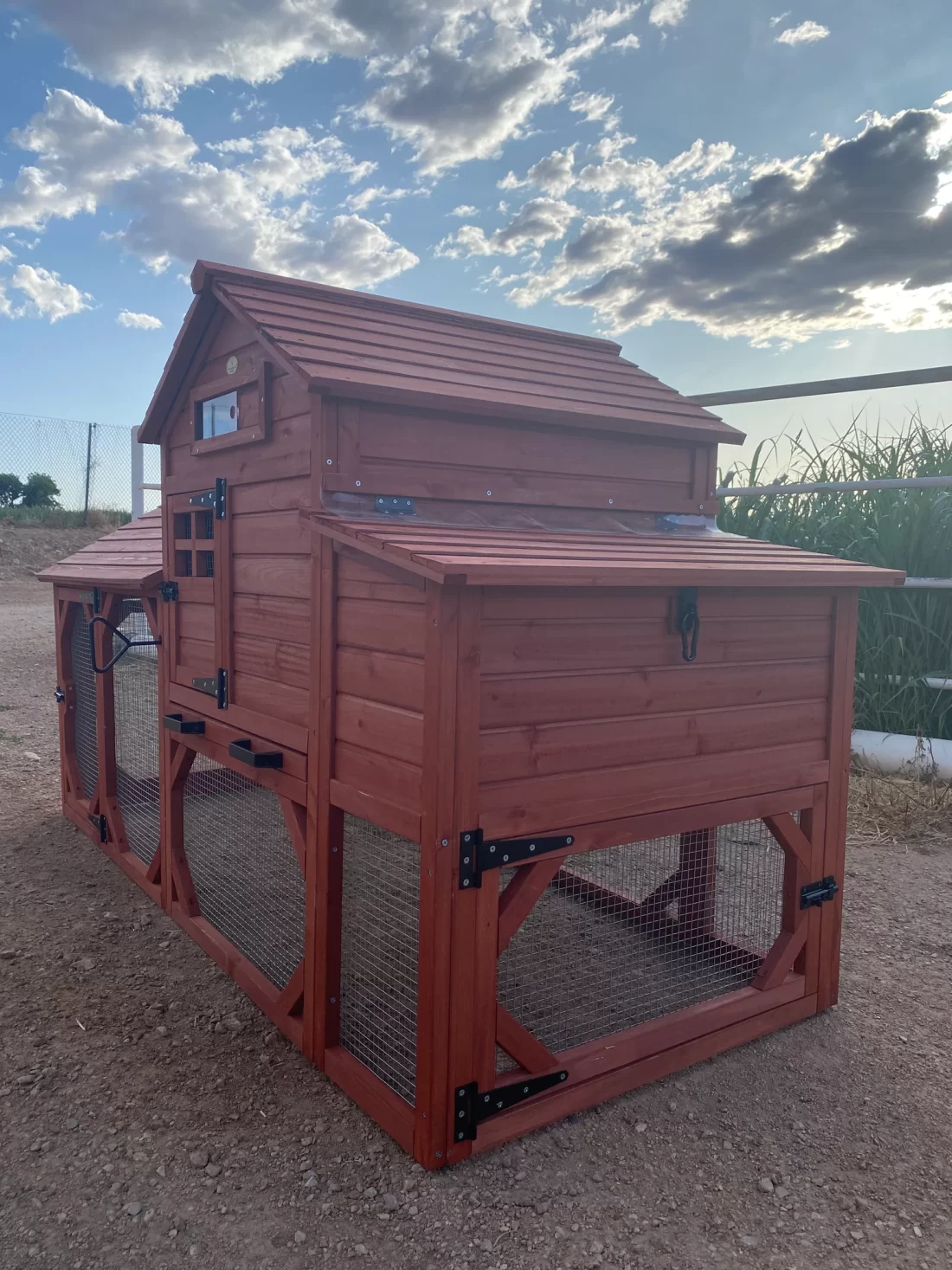Creating a comfortable and efficient space for your chickens is essential for their health and productivity. By optimizing your backyard for chicken coops, you can ensure that your flock has everything they need to thrive. Scroll down to explore some practical tips to make the most out of your backyard space for your chicken coop.

Assessing Your Backyard Space
Assessing your backyard space is essential before setting up your chicken coop. Consider the size and layout of your yard. Identify sunny and shaded areas and spots that might be prone to flooding. By understanding your backyard’s characteristics, you can choose the best location for your chicken coop.
Choosing the Right Location
Selecting the right location for your chicken coop is crucial. Here are some factors to consider:
Sunlight and Shade: Chickens need sunlight for health and egg production, but they also need shade to stay calm. Choose a spot that gets a good mix of both.
Drainage: Avoid low-lying areas that may collect water and become muddy. Ensure the location has good drainage to keep the coop dry.
Accessibility: Place the coop in a location that is easily accessible for feeding, cleaning, and egg collection. Proximity to your house can make daily maintenance easier.
Designing the Coop Layout
The layout of your chicken coop should maximize space and functionality. Here are some design tips:
Coop Size: Ensure the coop is large enough to accommodate your flock comfortably. Each chicken needs at least 4 square feet of space inside the coop and 8-10 square feet in the run.
Nesting Boxes: Position nesting boxes in the coop’s quiet, dark corner. This encourages hens to lay eggs in a designated area and keeps the eggs clean and easy to collect.
Roosting Bars: Install roosting bars for chickens to perch on at night. These bars should be higher than the nesting boxes to prevent hens from sleeping in them.
Utilizing Vertical Space
One way to optimize your backyard space is by utilizing vertical space. Here’s how:
Raised Coops: Consider a raised coop design. This allows chickens to use the space underneath for dust baths or shade.
Stacked Nesting Boxes: Stacking nesting boxes vertically can save floor space and provide more laying areas without expanding the coop’s footprint.
Hanging Feeders and Waterers: Use hanging feeders and waterers to free up floor space and keep food and water clean.
Creating a Functional Run
A chicken run is an essential part of your setup. It provides chickens with space to roam and forage. Here’s how to create a functional run:
Size and Security: Ensure the run is spacious enough for your flock. Use sturdy materials like galvanized wire to protect chickens from predators.
Ground Cover: Use materials like sand or wood chips for the run’s ground cover. This helps with drainage and provides a clean surface for chickens to walk on.
Enrichment: Add perches, logs, and dust baths to the run to keep chickens entertained and encourage natural behaviors.
Maximizing Safety and Protection
Keeping your chickens safe from predators and harsh weather is crucial. Here are some safety tips:
Predator-Proofing: Use hardware cloth instead of chicken wire, as it is more robust and effective at keeping predators out. Bury the wire at least 12 inches underground around the coop’s perimeter to prevent digging predators.
Weather Protection: Ensure the coop is weatherproof. Use solid materials for the roof and walls to protect against rain, wind, and snow. Provide ventilation to prevent overheating in the summer and dampness in the winter.
Maintaining Cleanliness and Hygiene
A clean coop is essential for the health of your chickens. Here’s how to maintain cleanliness:
Regular Cleaning: Remove droppings daily and replace soiled bedding weekly. Deep clean the coop monthly by scrubbing surfaces with a mild disinfectant.
Easy-to-Clean Materials: Use materials that are easy to clean and disinfect. For example, plastic or metal nesting boxes are easier to clean than wooden ones.
Proper Bedding: Use absorbent bedding materials like straw or wood shavings. These help control moisture and odor, keeping the coop dry and pleasant.
Incorporating Sustainability
Incorporating sustainable practices into your chicken coop design can benefit your flock and the environment. Here are some ideas:
Rainwater Harvesting: Install a rainwater collection system to provide water for your chickens. This will reduce your reliance on tap water and ensure a steady fresh water supply.
Composting: Compost chicken droppings and bedding to create rich fertilizer for your garden. This not only reduces waste but also enhances your garden’s productivity.
Solar Power: Consider using solar-powered lights and water heaters. This can reduce energy costs and provide a reliable power source for your coop.
Conclusion
Optimizing your backyard space for a chicken coop involves careful planning and thoughtful design. By assessing your space, choosing the right location, and incorporating functional and sustainable elements, you can create an efficient and comfortable environment for your chickens. These tips will help ensure your flock stays healthy, happy, and productive, making your backyard chicken-keeping experience enjoyable and rewarding.



